Eswin Computing, formerly Eswin Technology Group, is a Chinese semiconductor company established in 2018. In 2023, the company unveiled its EIC7700 RISC-V-based system-on-chip (SoC) at the Embedded World conference. The SoC features a 64-bit RISC-V core, 2D/3D GPU, hardware video encoder/decoder, NPU, DSP, and security subsystem. Targeted at machine vision, video analysis, and AI PCs, it supports full-stack floating-point operations and offers strong codec capabilities. The EIC7700 also includes a power-efficient NPU matrix and vector computing module.
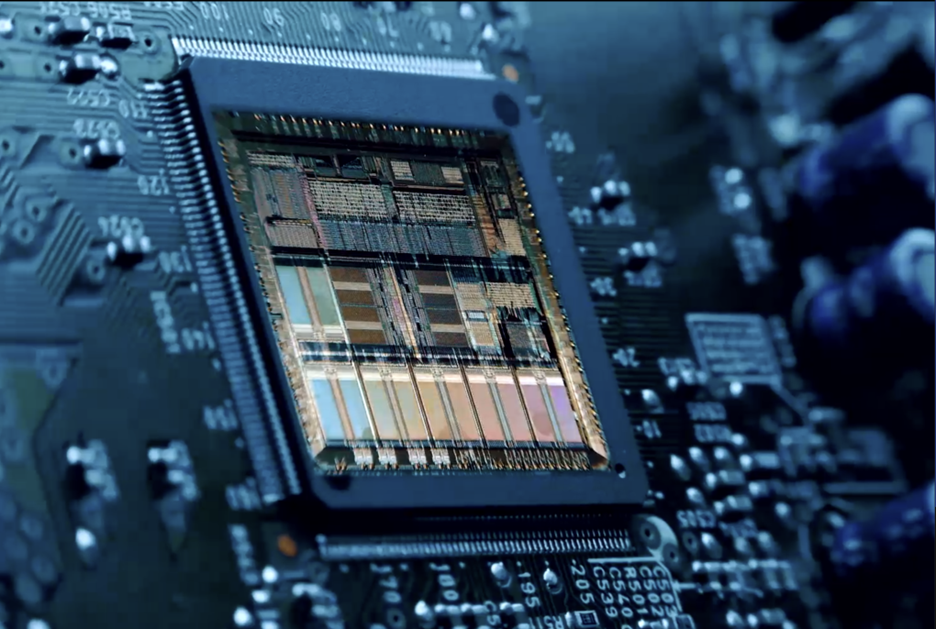
Eswin Technology Group Co., Ltd., a Chinese semiconductor company, was established in 2018. In June 2019, Wang Dongsheng stepped down as BOE chairman and joined Beijing Eswin Technology Co., starting his new career in the IC industry. In February 2020, Beijing Eswin Technology Group was reorganized and founded. Dongsheng was elected chairman. In 2023, the company renamed itself Eswin Computing.
At the 2023 RISC-V summit in Beijing, He Ning, senior vice president and chief technology officer of Eswin Computing, showed the company’s RISC-V architecture IC and solutions used in multimedia, wireless connectivity, edge computing, automotive microcontrollers, automotive communication, and other scenarios. Ning said, “China and RISC-V have a mutually fulfilling relationship.” From 2021 to 2027, China’s RISC-V core shipments are expected to continue to account for about 50% of the world’s total.
In March, the company announced its EIC7700 RISC-V based SoC. And then in April at the Embedded World conference in Nuremberg, Germany, Eswin showed the SoC on a SiFive developer board.
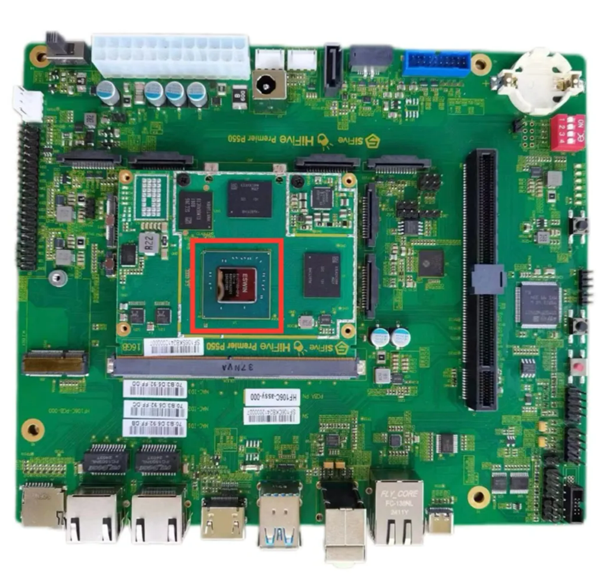
The SoC is targeted at machine vision, video analysis, and AI PCs. The SoC features a 64-bit, three-issue, out-of-order, SiFive RISC-V P550 core complex, a 2D/3D GPU, hardware video encoder/decoder, NPU, DSP, MIPI DSI, a security subsystem, an integrated high-speed DDR5 memory controller, root complex PCI Express Gen 3 X4.
It adopts Eswin’s independently developed power-efficient NPU matrix and vector computing module, and supports full-stack floating-point operations to guarantee the precision of large language models. The DNN processor provides computing power of 13.3 TOPS at int8 precision, which can meet the needs for classification, detection, segmentation, and tracking. It has strong codec capabilities that support 32-channel 1080p 30-frame video decoding and 13-channel 1080p 30-frame video encoding, and can be paralleled with the reasoning function. The image signal processor (ISP) has multiple hardware acceleration functions for image processing, such as image enhancement, dynamic contrast enhancement, and distortion correction, and offers a rich set of external interfaces for multimedia input and output, PCIe, and Ethernet.
At a SiFive meeting this week, it was revealed that the Eswin EIC7700’s iGPU is based on Imagination Technologies’ GPU IP.
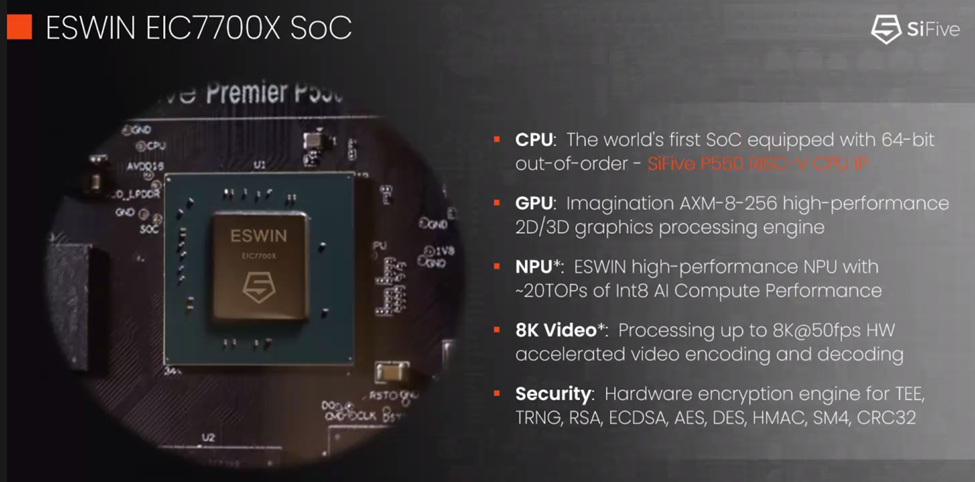
The EIC7700X is a system-on-chip that incorporates several key components. At its core are four 64-bit RISC-V processors using the RV64GC instruction set, with a maximum clock speed of 1.8 GHz. The chip also includes both 3D and 2D graphics processing units, though their specific models are not named. For AI workloads, it features a neural processing unit capable of 19.95 TOPS (trillion operations per second).
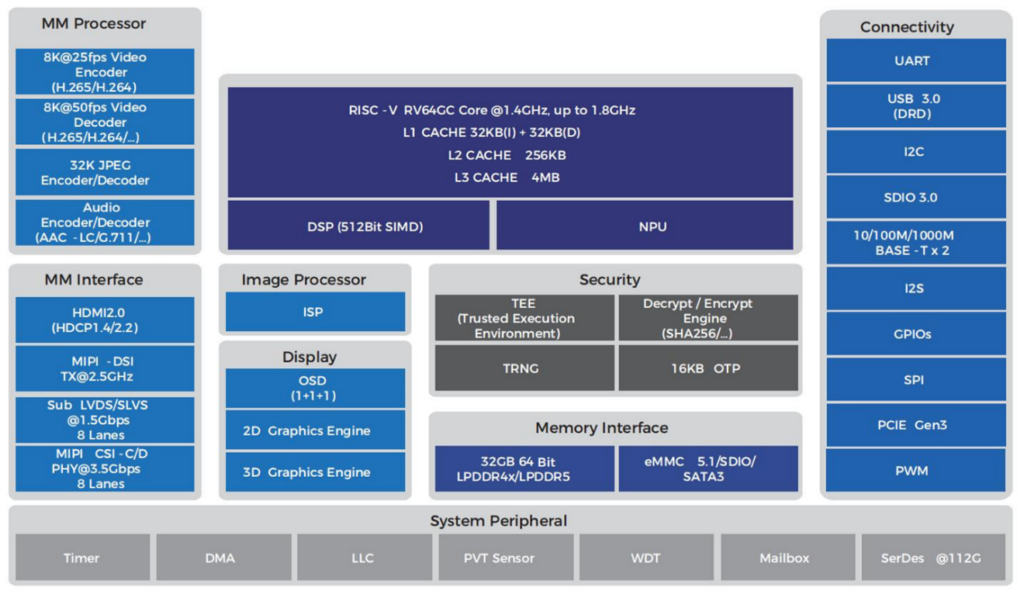
The SoC’s video capabilities are substantial, with H.265 and H.264 video encoding and decoding support. It can handle up to 32 simultaneous 1080p30 video streams. For display output, the chip offers HDMI and DSI (Display Serial Interface) options, along with various video input interfaces.
Connectivity is addressed through dual Gigabit Ethernet (GbE) ports, while expansion is provided via a PCIe Gen 3 interface with four lanes. The description indicates that the EIC7700X includes additional features beyond those explicitly mentioned, suggesting a versatile chip designed for a range of applications requiring significant processing power, AI capabilities, and robust video handling.
The EIC7700X is part of Eswin’s Intelligent Computing SoCs family, which includes four models. The EIC7700 shares a similar design but operates at a lower clock speed of 1.4 GHz and features a 13.3 TOPS NPU. The EIC7700X will be integrated into the upcoming SiFive HiFive Premier P550, which launched in July 2024. The EIC7702 and EIC7702X are more advanced octa-core SiFive P550 RISC-V SoCs designed for AI PCs. These models operate at either 1.4 or 1.8 GHz, support up to 64GB RAM, and offer expanded storage and video capabilities, including 8K video encoding/decoding or up to 64´ 1080p30 video decoding. They also feature increased PCIe and GbE interfaces, resulting in a larger 35´35mm package. The NPU in these models is more powerful, with the EIC7702 offering 26.6 TOPS and the EIC7702X providing 39.9 TOPS.
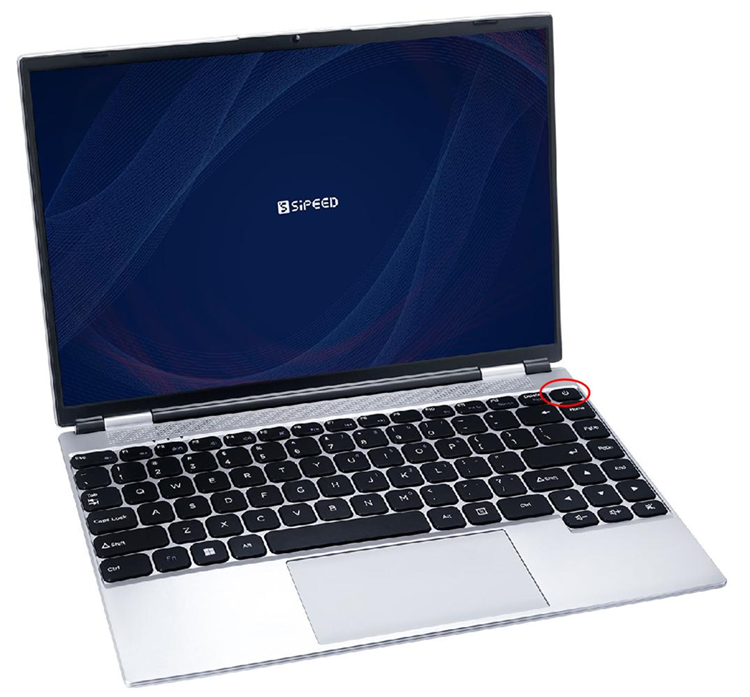
Sipeed’s Lichee Book 4A is an EIC7700X quad-core RISC-V laptop designed for developers to experience RISC-V technology with approximately 20 TOPS AI acceleration. It features a 14-inch 1920´1200 display, an 88-key keyboard, and various interfaces, including USB-A, USB-C, SSD slot, TF card slot, Mini HDMI, and headphone jack. The laptop integrates a RISC-V TH1520 SOM, offering 8+32 or 16+128 configuration options, making it a versatile and usable RISC-V solution, balancing openness and functionality.